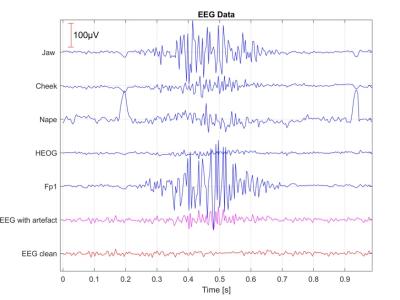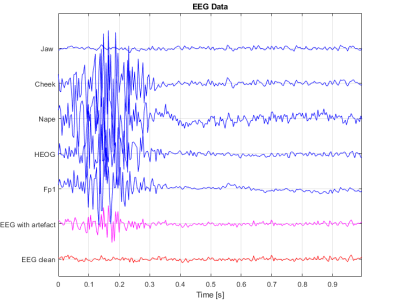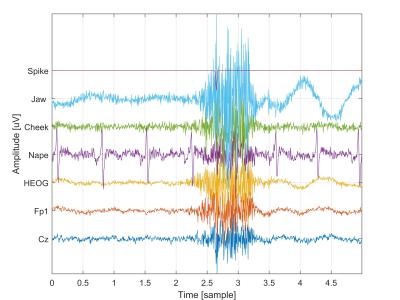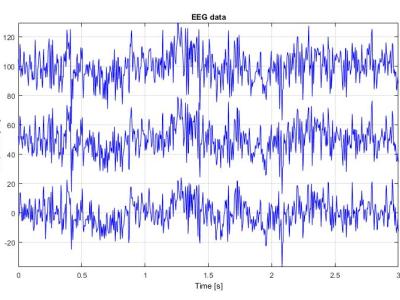Dataset Entries from this Author

Synthetic EEG Dataset for CNN-LSTM Training: Clean and Artifact-Contaminated Signals
This dataset consists of synthetically generated EEG and EMG signals designed for training Convolutional Neural Networks (CNNs) in artifact detection and removal. The dataset includes both clean EEG signals and EEG signals contaminated with simulated EMG artifacts from various sources.
- Categories:

Synthetic EEG Dataset for CNN Training: Clean and Artifact-Contaminated Signals
This dataset consists of synthetically generated EEG and EMG signals designed for training Convolutional Neural Networks (CNNs) in artifact detection and removal. The dataset includes both clean EEG signals and EEG signals contaminated with simulated EMG artifacts from various sources.
- Categories:

Synthetic Epileptic Spike EEG Database (SESED-WUT)
The database contains EEG, EMG, and EOG signals with artificially generated epileptic spikes. The recordings were performed using the g.USBamp 2.0 amplifier. Data were collected from 5 EEG channels (C3, Cz, C4, Fz, Fp1), 1 EOG channel (VEOG), and 3 EMG channels (Nape, Cheek, Jaw). The signals were sampled at 256 Hz and processed with a bandpass filter (0.1–100 Hz) and a notch filter (48–52 Hz).
- Categories:

Five users aged 23, 25, 31, 42, and 46 participated in the experiment. The users sat comfortably in a chair. A green LED of 1 cm diameter was placed at a distance of about 1 meter from a person's eyes. EEG signals were recorded using g.USBAmp with 16 active electrodes. The users were stimulated with flickering LED lights with frequencies: 5 Hz, 6 Hz, 7 Hz, and 8 Hz. The stimulation lasted 30 seconds. The recorded signals were divided into the data used for training, the first 20 seconds, and the data used for testing, the next 10 seconds, for each signal.
- Categories:
